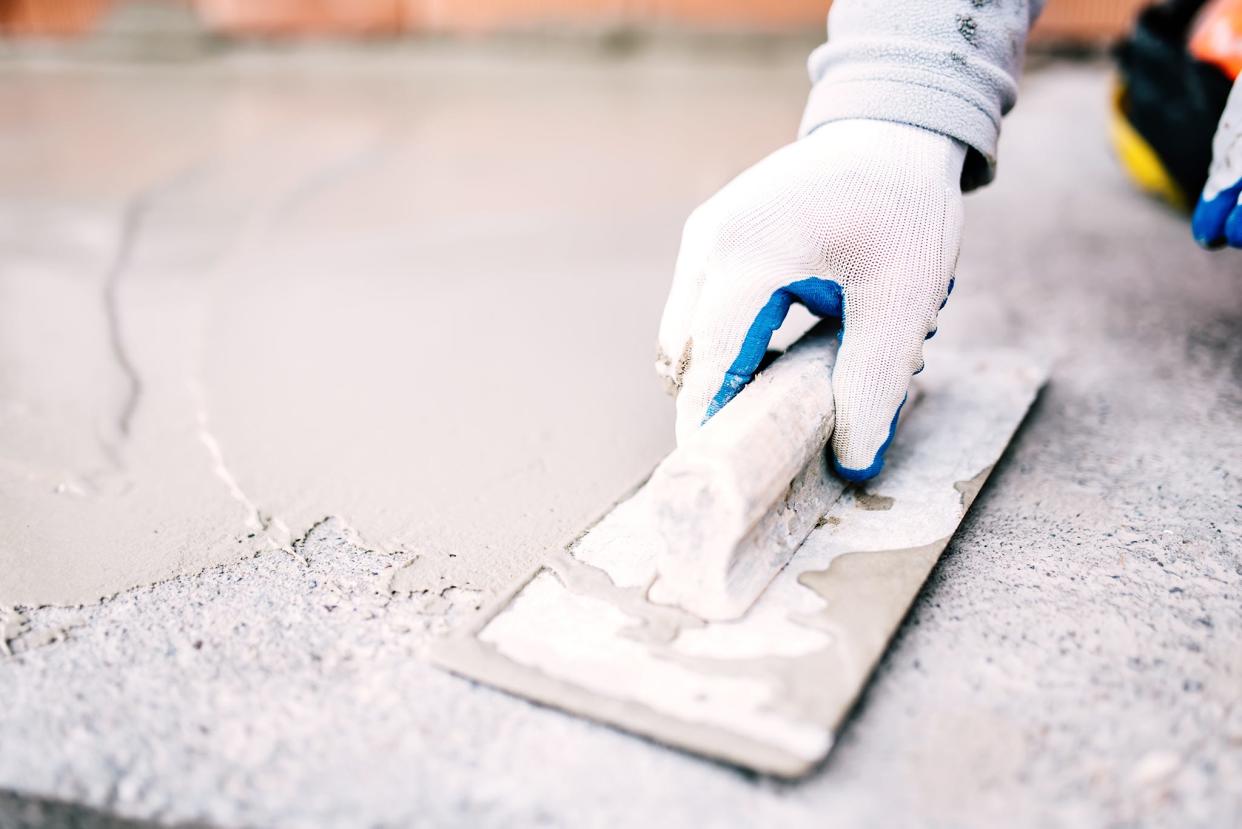How to Avoid Winter Weather Foundation Problems

Before the cold weather arrived you probably prepared by having your furnace checked, fireplace inspected, windows caulked or insulated, etc. But did you take the necessary precautions to minimize damage to your foundation?
Rapid temperature changes, snow and ice storms, sudden freezes, and shifts in wet and dry weather take a toll on your home’s foundation because all these winter weather woes can lead to one major problem — water. And water is perhaps a homeowner’s greatest enemy. It not only affects the soil around your foundation, but it can also cause direct damage — like bowing and cracking walls — and it also fosters the growth of mold.
Because your foundation is arguably the most important part of your home, here are some winter weather tips that can prevent water damage and protect your home’s structural integrity.
Clean Gutters
Properly functioning gutters and downspouts play a critical role in protecting your foundation by directing water away from your home. When gutters are backed up, rain and melting snow and ice that should be directed through the system and away from your house will instead collect around the foundation.
If you did not properly clean your gutters in the fall, it’s important to head out soon (weather permitting) and ensure they are free of debris. Also, make sure that all downspouts are connected properly and that they run at least 10 feet away from your foundation.
Prevent Icicles and Ice Dams
Ice dams and icicles form when water from melting snow re-freezes at the edge of your roofline. If left unchecked, ice dams may grow large enough to prevent water from draining off the roof.
“When this happens, water can leak into the attic and potentially run down into the interior of the walls causing damage to ceilings, floors, walls, insulation, and if the problem is bad enough, even the foundation,” said Jason Murton with Accurate Inspections, LLC.
To avoid this problem, ensure that your gutters and downspouts are working properly and that your attic is well insulated. And, after a heavy snowfall, use a roof rake to remove at least the lower 4 feet of snow from your roof’s edge.
If ice dams do appear, Murton says there are chemical ice-melt products available, but he cautions homeowners against using rock salt, which can damage gutters and siding.
“And as tempting as it may be, avoid knocking icicles down,” he said. “Not only do you run the risk of injuring yourself or others close by, but you also risk tearing the entire gutter away from the side of the house. In addition to being a bothersome and costly repair, the lack of gutters, especially in the middle of winter, can cause further problems.”
Keep Snow Away from the Perimeter
When snow melts, the water must go somewhere. If snow is built up around the house, that water may seep into existing cracks in the foundation, leading to potential basement flooding. And, if the temperature drops once the water has entered those cracks, it will expand as it freezes, which could lead to further cracking.
In addition to shoveling snow away from your home, Murton says you can avoid potential water and foundation problems by removing snow from decks and patios, and not letting snow pile up inside egress windows.
“Some people choose to cover egress windows in the winter, but if you do that, make sure it’s a strong cover that can handle the weight of an adult,” he said. “There have been instances where a cover gets hidden by a layer of snow and someone unknowingly steps on it, falling into the egress and injuring themselves.”
Ensure proper grading
The landscape immediately surrounding your home should slope downward in order to direct water away from the foundation. If it doesn’t, water from rain, irrigation systems, or melting snow can run back toward the house.
“It may be difficult to check your grading during the snowy season, which is why we recommend inspecting it in the fall,” said Murton. “However, even if you checked it in the fall, I also recommend taking another look before the spring rains come. Freezing and thawing during the winter can cause a change in grading, so it’s important to inspect it a few times a year.”
Prevent plumbing freezes
The last thing any homeowner wants is water freezing inside an outdoor faucet and connected pipes. Just a little frozen water can exert enough force to rupture your faucet or pipe, which can cause a flood near your foundation and inside your home.
If you have a sprinkler system, turn off the water that feeds it and have the lines professionally blown out. You should also remove and drain all garden hoses, protect hose bibs with a Styrofoam cover, and insulate all exposed plumbing pipes. Also, if you don’t know where your home’s main water shut-off valve is, it’s a good time to find it in case an emergency arises.
Look for Warning Signs
If your home’s foundation is suffering from winter damage, you may notice some red flags. A door that fails to latch or is constantly jammed, cracks popping up over doorways and windows, a window that suddenly sticks or won’t close completely, or cracks in vinyl or ceramic tile – these are just some of the warning signs that may signal a problem with your foundation.
If you have any concerns — whether you’ve found a minor crack or suspect a major structural issue — it’s worth calling a reputable contractor or foundation expert to take a closer look.
For more home maintenance tips and information, follow the Greater Lansing Association of REALTORS® on Facebook.
This article originally appeared on Lansing State Journal: How to Avoid Winter Weather Foundation Problems

